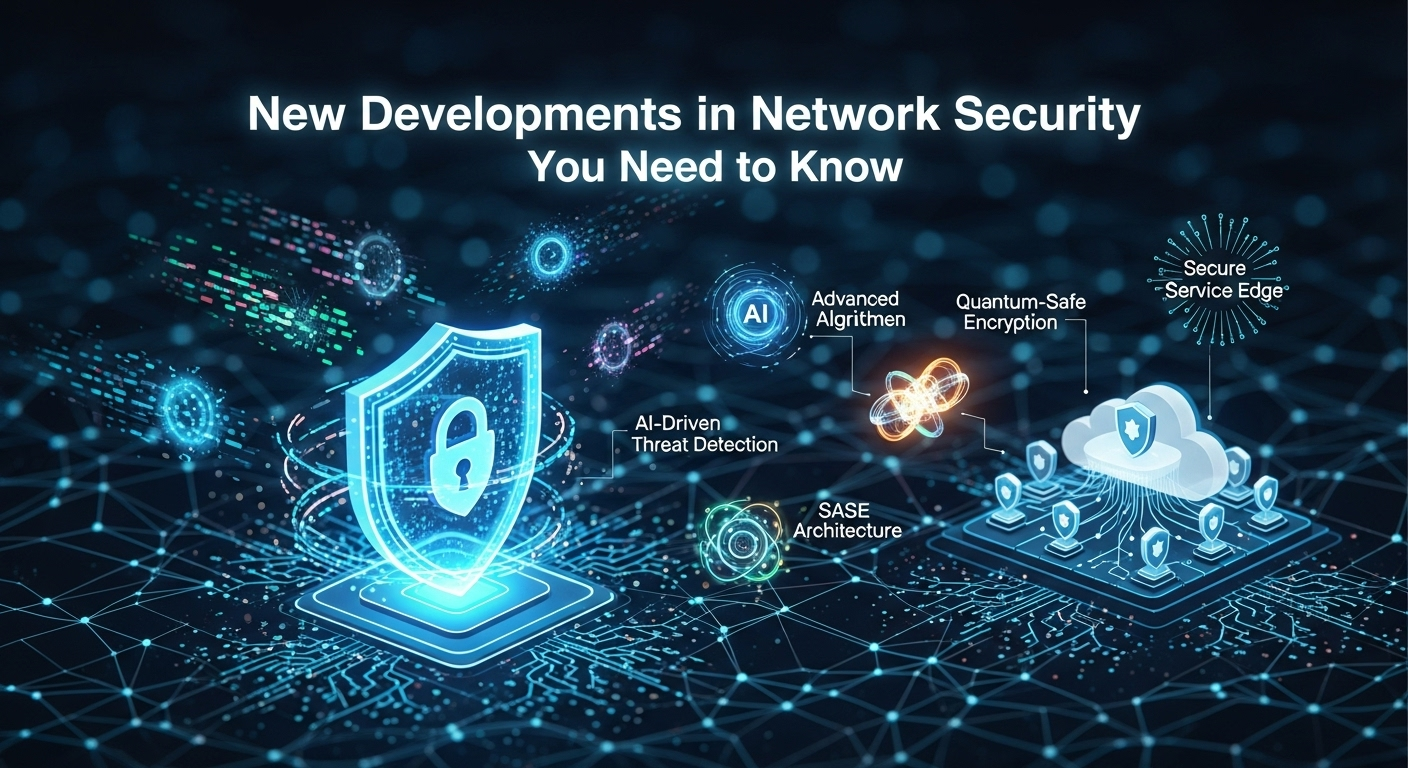In today's hyper-connected world, the digital landscape is in a constant state of flux. As businesses embrace digital transformation, remote work, and cloud computing, the traditional network perimeter has all but dissolved. This evolution, while beneficial for productivity and scalability, has created a vastly expanded and more complex attack surface for cybercriminals. Consequently, the defensive strategies of yesterday are no longer sufficient. To stay ahead of sophisticated threats, it is crucial for organizations and IT professionals to understand and adopt the new developments in network security. These advancements are not merely incremental updates; they represent fundamental shifts in how we approach a secure, resilient digital infrastructure. The Ascendancy of AI and Machine Learning in Defense Mechanisms The integration of Artificial Intelligence (AI) and Machine Learning (ML) into network security is arguably one of the most transformative developments in recent years. Traditional security tools often rely on signature-based detection, which means they can only identify known threats. This reactive approach leaves networks vulnerable to new, zero-day attacks. AI and ML flip this script by enabling a proactive and predictive defense posture. These intelligent systems are trained on vast datasets of network traffic, allowing them to learn what constitutes "normal" behavior for a specific environment. By establishing a baseline of normal activity, AI-powered security platforms can instantly detect anomalies and deviations that may signal a security breach in progress. This could be an employee's account suddenly accessing unusual files at 3 AM or a server making unexpected outbound connections. Unlike rule-based systems that generate a high volume of false positives, ML algorithms can analyze context and nuance, significantly improving detection accuracy and reducing "alert fatigue" for security teams. This allows human analysts to focus their expertise on investigating genuine, high-priority threats rather than sifting through endless noise. Furthermore, the application of AI extends beyond mere detection. It powers the next generation of Security Orchestration, Automation, and Response (SOAR) platforms. These systems can automate routine incident response tasks, such as quarantining a compromised endpoint, blocking a malicious IP address, or revoking user credentials. This automation happens at machine speed, drastically reducing the dwell time of an attacker within the network and minimizing the potential for damage. The ability to learn, adapt, and respond autonomously makes AI and ML a cornerstone of modern network security architecture. #### Predictive Threat Intelligence Predictive threat intelligence leverages AI to sift through immense volumes of global data—from dark web forums and social media to malware databases and security bulletins—to identify and forecast emerging threats before they are launched. Instead of just reacting to attacks, this technology allows organizations to anticipate an attacker’s next move. For example, an AI model might detect chatter about a new exploit for a popular software, enabling a company to patch its systems proactively. This forward-looking approach is a monumental leap from traditional threat intelligence, which often provides information about attacks that have already occurred. By analyzing patterns, attacker TTPs (Tactics, Techniques, and Procedures), and infrastructure, predictive models can generate highly contextualized and actionable intelligence. This empowers security teams to reinforce specific defenses, hunt for indicators of compromise (IoCs) associated with an impending campaign, and adjust their security posture in real-time to counter future threats. #### Behavioral Analytics (UEBA) User and Entity Behavior Analytics (UEBA) is a specific application of ML that focuses on monitoring the activities of users and other entities (like servers and applications) within a network. It creates a dynamic behavioral profile for each entity and flags any significant deviations. For instance, if a user who typically works 9-to-5 from a single location suddenly logs in from a different continent and starts downloading large amounts of data, the UEBA system will immediately raise an alert. This is crucial for detecting insider threats, whether malicious or accidental, and for identifying compromised accounts that have been taken over by external attackers. Unlike static rules, UEBA understands that behavior is not always black and white. It uses sophisticated risk scoring to prioritize alerts, helping security analysts distinguish between a benign anomaly (e.g., an employee working on a weekend to meet a deadline) and a genuinely malicious action. This focus on behavior, rather than signatures, is a powerful tool against attacks that bypass traditional defenses. The Zero Trust Architecture (ZTA): A Paradigm of "Never Trust, Always Verify" The old castle-and-moat security model, which assumed everything inside the network perimeter was trusted, is dangerously obsolete. With the rise of remote work, cloud services, and mobile devices, the perimeter has become porous and ill-defined. The Zero Trust Architecture (ZTA) addresses this reality with a simple yet powerful principle: never trust, always verify. It operates under the assumption that a breach is inevitable or has likely already occurred, meaning no user or device, whether inside or outside the network, should be granted implicit trust. Implementing a Zero Trust model involves a fundamental shift in mindset and technology. Every single access request must be continuously authenticated, authorized, and encrypted before access is granted. This verification process isn't a one-time event at login; it's an ongoing assessment based on a multitude of factors, including user identity, device health, location, and the sensitivity of the data being requested. This granular, context-aware policy enforcement ensures that even if an attacker gains a foothold in one part of the network, their ability to move laterally and access other resources is severely restricted. The core pillars of ZTA include strong identity and access management (IAM), micro-segmentation, and the principle of least privilege. IAM ensures that users are who they say they are, often through multi-factor authentication (MFA). Micro-segmentation breaks the network into small, isolated zones to contain breaches. Finally, the principle of least privilege ensures that users and applications are only given the absolute minimum level of access required to perform their specific function. Together, these elements create a more resilient and breach-resistant security posture fit for the modern, distributed enterprise. #### Micro-segmentation and Lateral Movement Prevention Micro-segmentation is a network security technique that divides a data center or cloud environment into distinct,





